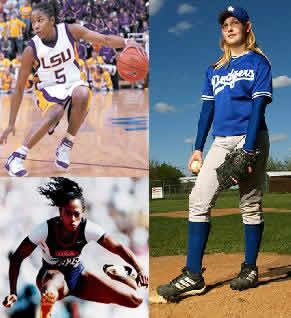Up until the age of 12 to 14 (approximately the stage of puberty) boys and girls do not differ significantly in height, weight, girth, bone width, or skinfold thickness.
PHYSIOLOGICAL RESPONSE TO ACUTE EXERCISE
Neuromuscular responses
Females:
- 40-60% weaker in the upper body
- 25-30% weaker in the lower body
- 5-15% weaker in lower body strength relative to body weight
- no difference in lower body strength relative to fat free mass
- significantly weaker in upper body strength relative to body weight
- significantly weaker in upper body strength relative to fat free mass
Why?
Females:
- use their lower bodies more often
- have a higher percentage of fat free mass below the waist
- for the same amount of muscle, have the same strength as males
- possess smaller muscle fibre cross-sectional areas
- have less muscle mass in general
Cardiovascular responses
Females:
- have a higher heart rate response to submaximal exercise
- have the same maximum heart rates
- have the same cardiac output for absolute submaximal power output
- have a smaller stroke volume
Why?
Females:
- have smaller hearts which means smaller left ventricles
- have lower testosterone concentrations
- have smaller blood volumes
- are less aerobically active which means less conditioned
- have a lower a-vO2diff which means a lower hemoglobin content and therefore a reduced muscle oxidative potential
Respiratory responses
Females:
- work at a higher percentage of their VO2max
- have a higher breathing rate
Why?
Females:
- have a smaller body size
Metabolic responses
- remember VO2 = Q x a-vO2diff
Females:
- have their peak VO2max between 12-15 years of age compared to 17-21 years of age for males
Why?
- extra body fat
- lower hemoglobin levels which means lower O2 content in the arterial blood
